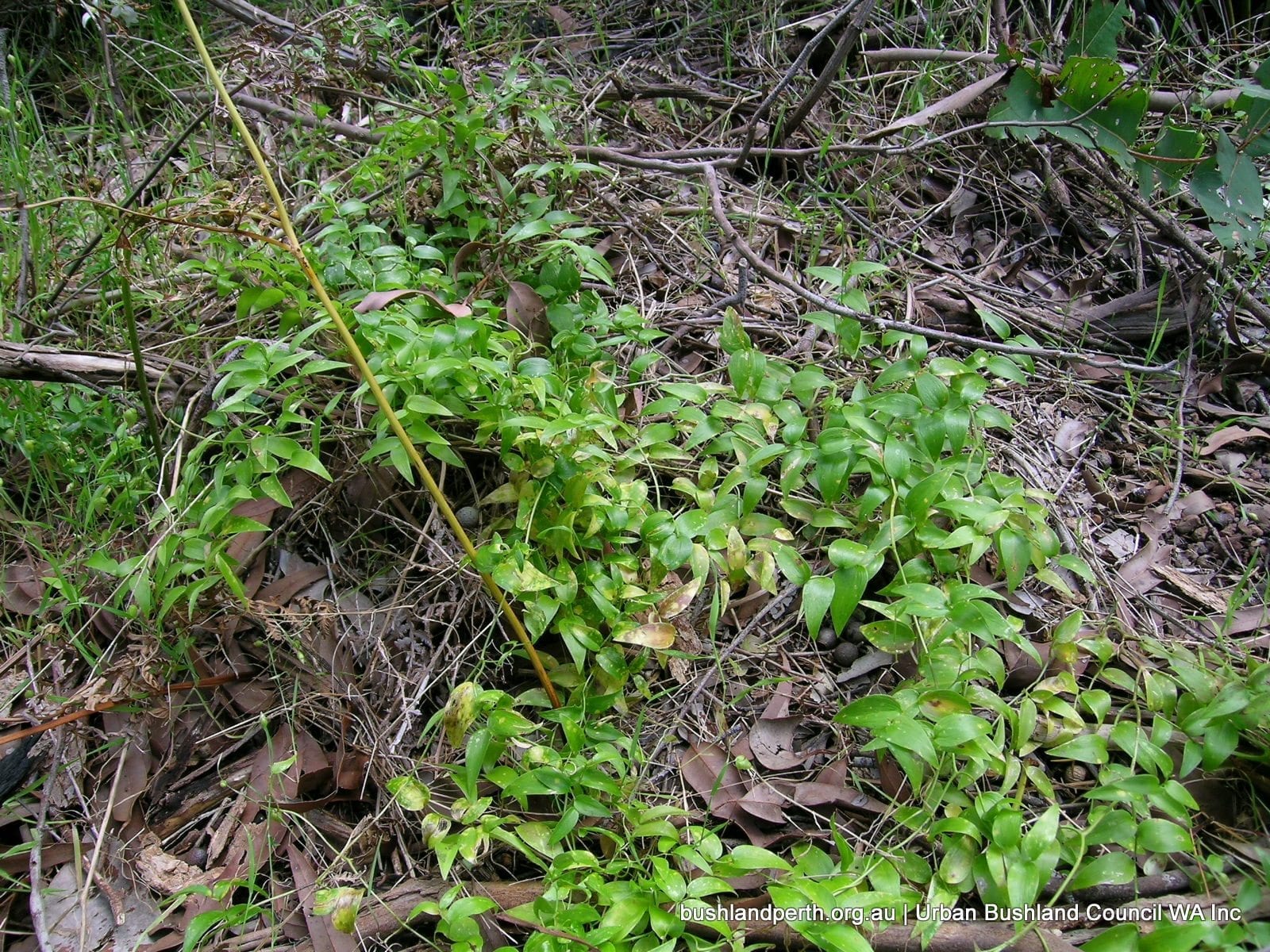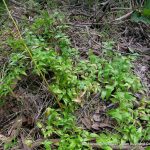Bridal Creeper

Common name
Bridal Creeper
Scientific Name
Asparagus asparagoides
Type of plant
Uncategorised
About this weed
This southern African plant was introduced as a garden plant and for floral arrangements. Since escaping it has become one of Western Australia’s most urgent environmental weed problems. It is extremely invasive and smothers native vegetation. The plant dies back in summer increasing the fire risk.
Description
Bridal Creeper is a rhizomatous and tuberous perennial creeper growing between 1-5 m high. The white flowers appear in spring then die down in summer. The time to first flowering is 2 to 3 years and the seedbank persists for 2 to 3 years if buried. It will generally survive fire. Birds relish the fleshy seeds and spread the seeds in their droppings.
Impact on Bushland
If left will spread over bushland and may impact on plant communities. It is considered extremely invasive and smothers vegetation, forms monocultures and increases fire risk during summer die-off phase.
Location
Found in many parts of the Eremaean and South-West Province. It prefers sand, loam, clay or granite usually near settlements.
Priority for removal
High: major threat to the conservation values of Banksia woodlands.
Management (hand)
There has been limited success controlling this invasive weed using biocontrol agents including a leafhopper, a rust fungus and a leaf beetle.
Management (herbicide)
Spray 0.2 g metsulfuron methyl + Pulse in 15 L water (or 2.5 – 5g /ha + Pulse). Best results achieved when flowering. Biological control agents are available. Read the manufacturers’ labels and material safety data sheets before using herbicides. Optimum spraying months are July and August.
Flowering month/s
August, September
Flower colour/s
White
Information source
https://florabase.dpaw.wa.gov.au/browse/profile/8779
Additional information
https://florabase.dpaw.wa.gov.au/weeds/swanweeds/
Hussey, B.M.J., Keighery, G.J., Dodd, J., Lloyd, S.G. and Cousens, R.D. (2007) Western weeds. A guide to the weeds of Western Australia, Second Edition, The Weeds Society of Western Australia, Victoria Park, Western Australia.


